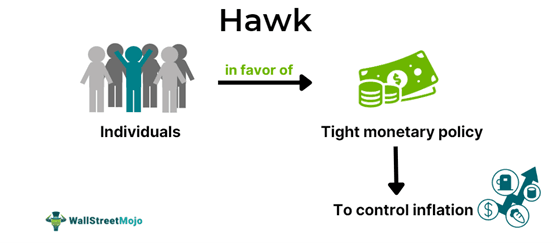Hawk is an individual who believes in taking stricter steps to ease inflation. They favor tighter monetary policy, advocating for raising interest rates, which ultimately increases the cost of borrowing, thereby reducing borrowing and encouraging savings. This, in turn, slows economic growth but indicates a stabilizing inflationary scenario.
Hawks are primarily concerned with controlling inflation and maintaining price stability. Their primary focus is on achieving low inflation rates. Hence, they believe in higher interest rates, reduced government spending, or other measures to mitigate inflationary pressures. They generally support tighter monetary policy to restrict excessive borrowing and spending, thereby controlling inflation.
Dove is the term opposite to hawk in economics. Both the terms draw upon the analogy of birds, indicating the nature of the individuals that these categories of birds specify. Hawks are associated with their aggressive nature, while doves are known for their peaceful and gentle disposition. These terms are often utilized in central banking and monetary policy discussions, where policymakers make decisions regarding interest rates and money supply to manage economic growth and stability.
Hence, economists, policymakers, and advisors with hawkish attitudes focus on long-term economic stability instead of short-term economic boosts or bringing down the unemployment level.


